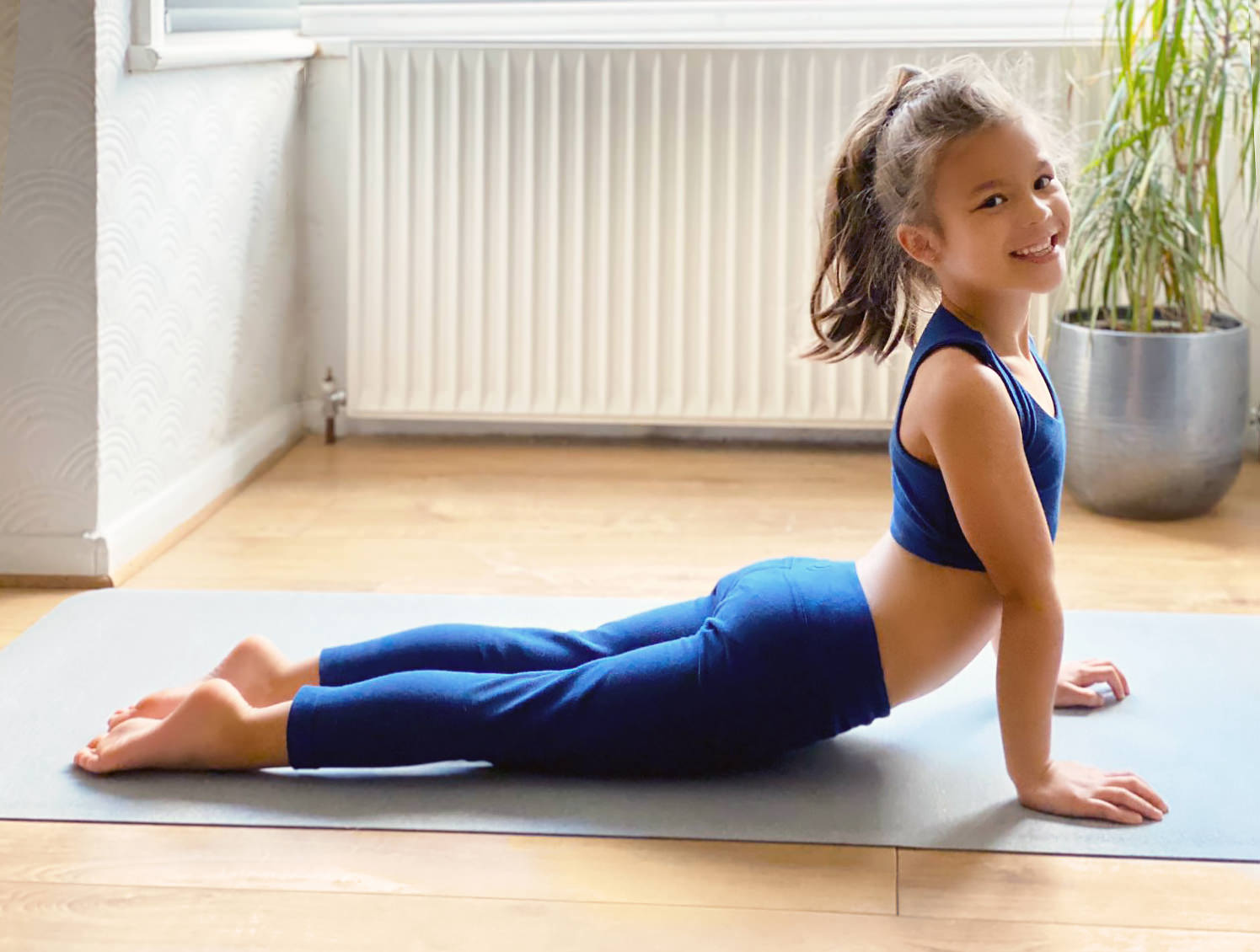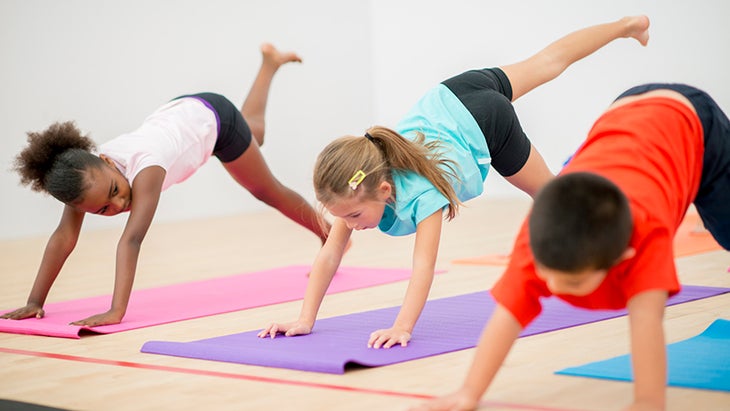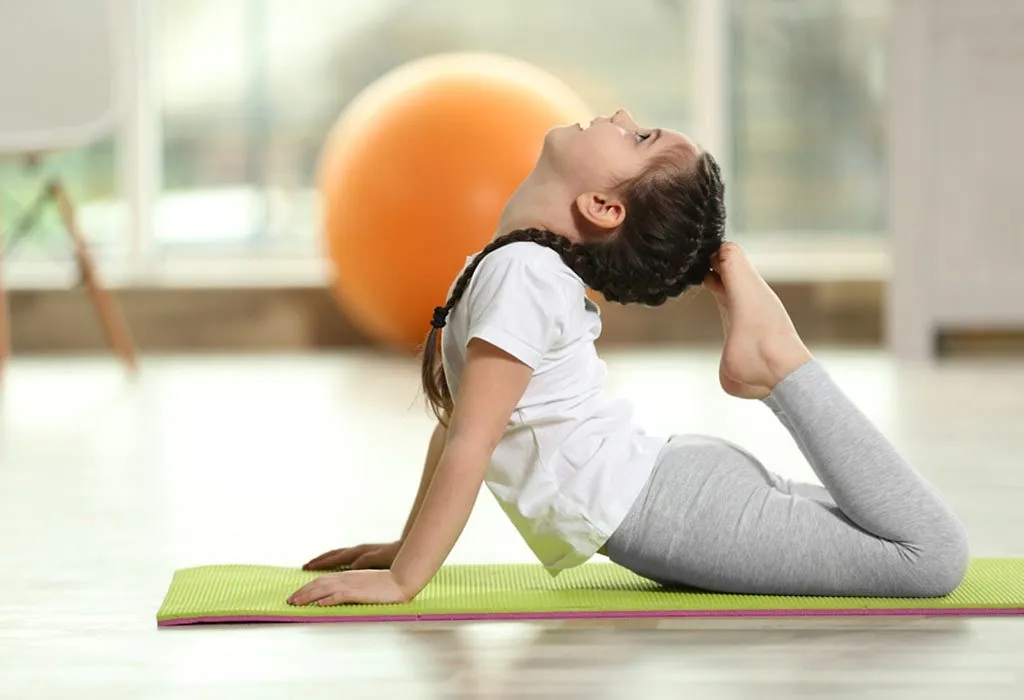Yoga isn't just for grown-ups. It's an amazing practice that can benefit children in numerous ways. From improving flexibility and strength to enhancing concentration and emotional well-being, yoga offers a holistic approach to health for kids of all ages. In this article, we'll explore 10 easy yoga poses specifically designed for children, along with their benefits and tips for practicing safely. Easy Yoga Poses For Kids So, let's roll out our mats and dive into the world of yoga for kids!
Yoga For Kids

Yoga has gained popularity worldwide as a form of exercise and relaxation. However, its benefits extend beyond adults to children as well.
Yoga for kids is not only a fun physical activity but also a valuable tool for promoting emotional balance, mental focus, and overall well-being. By introducing children to yoga at a young age, parents and educators can instill healthy habits that last a lifetime.
Read also: How To Start Yoga Practice At Home
Benefits Of Yoga For Children
The benefits of yoga for children are vast and encompass various aspects of their development. Physically, yoga helps improve flexibility, strength, and coordination.
Mentally, it teaches children mindfulness and relaxation techniques, promoting emotional resilience and stress management. Additionally, yoga fosters a sense of connection with oneself and others, promoting empathy and compassion.
Factors To Consider Before Introducing Yoga To Kids

Before starting a yoga practice with children, it's essential to consider a few factors. First, ensure that the practice is age-appropriate, with poses and activities suitable for the child's developmental stage.
Second, create a safe and comfortable environment free from distractions. Finally, approach yoga with a playful and non-competitive attitude, encouraging children to explore and enjoy the practice at their own pace.
Preparing Your Child for Yoga Practice
Preparing your child for yoga practice involves introducing them to the basic concepts of yoga in a fun and engaging way. Begin by explaining what yoga is and why it's beneficial, using age-appropriate language.
You can also read books or watch videos about yoga together to pique their interest. Encourage your child to choose a special spot for their yoga practice and decorate it with their favorite toys or decorations.
10 Easy Yoga Poses For Kids

-
Child's Pose (Balasana)
- Child's pose is a gentle resting pose that helps children relax and stretch their back, shoulders, and arms. It's perfect for calming the mind and relieving stress and anxiety.
-
Cat-Cow Stretch (Marjaryasana-Bitilasana)
- The cat-cow stretch is a dynamic duo of poses that helps children improve their spinal flexibility and coordination. It's a great way to warm up the spine and promote better posture.
-
Downward-Facing Dog (Adho Mukha Svanasana)
- Downward-facing dog is a popular yoga pose that strengthens the arms, shoulders, and legs. It also lengthens the spine and energizes the body.
-
Tree Pose (Vrksasana)
- Tree pose challenges children's balance and concentration while strengthening their legs and core muscles. Encourage them to sway gently like a tree in the breeze to enhance their balance.
-
Butterfly Pose (Baddha Konasana)
- Butterfly pose is a gentle hip opener that helps improve flexibility in the inner thighs and groin area. It also stimulates the abdominal organs and promotes better digestion.
-
Cobra Pose (Bhujangasana)
- Cobra pose stretches the chest, shoulders, and abdomen while strengthening the back and buttocks. It's a great pose for improving posture and relieving tension in the back.
-
Warrior Pose (Virabhadrasana)
- Warrior pose builds strength and stamina in the legs, arms, and core muscles. It instills confidence and determination in children while promoting a sense of empowerment.
-
Bridge Pose (Setu Bandhasana)
- Bridge pose stretches the chest, neck, and spine while strengthening the back, buttocks, and hamstrings. It also improves blood circulation and energizes the body.
-
Happy Baby Pose (Ananda Balasana)
- Happy baby pose is a playful stretch that releases tension in the hips and lower back. It promotes relaxation and helps soothe fussy or irritable children.
-
Corpse Pose (Savasana)
- Corpse pose is the ultimate relaxation pose, allowing children to unwind and recharge after their yoga practice. It promotes deep relaxation and reduces stress and anxiety.
Read also: Top 10 Benefits Of Hot Yoga For Women
Tips for Practicing Yoga Safely with Kids

- Start with short sessions and gradually increase the duration as your child's interest and ability grow.
- Encourage children to listen to their bodies and take breaks when needed.
- Use props like blocks or blankets to support and modify poses as necessary.
- Make yoga fun by incorporating games, storytelling, or music into your practice.
- Be patient and supportive, and celebrate your child's efforts and progress along the way.
Making Yoga Fun For Kids
To make yoga fun for kids, think outside the box and get creative with your approach. Incorporate playful elements like animal poses, yoga games, or partner poses to keep children engaged and entertained.
You can also encourage them to use their imagination and creativity to explore different movements and expressions through yoga. By making yoga a joyful and rewarding experience, you'll inspire children to embrace the practice with enthusiasm and curiosity.
Conclusion
Yoga offers numerous benefits for children, from improving physical fitness to promoting emotional well-being and mindfulness. By introducing kids to yoga at a young age and making it a fun and interactive experience, parents and educators can help children develop essential skills for a healthy and balanced life. So, roll out your mats, strike a pose, and watch as your child blossoms into a confident and resilient yogi!
FAQs
Q. Can children start practicing yoga at any age?
Ans: Yes, children can start practicing yoga as soon as they are comfortable following simple instructions.
Q. How long should kids practice yoga each day?
Ans: Aim for shorter sessions, around 10 to 15 minutes, depending on the child's age and attention span.
Q. Can yoga help children with ADHD or hyperactivity?
Ans: Yes, yoga's focus on breathing and mindfulness can help children with ADHD or hyperactivity improve their concentration and self-regulation skills.
Q. Do kids need special yoga equipment?
Ans: No, children can practice yoga with just a yoga mat or on a soft surface. Props like blocks or straps can be helpful but are not necessary.
Q. Are there any yoga poses kids should avoid?
Ans: Avoid poses that strain or overstretch muscles. Encourage children to listen to their bodies and stop if they feel any discomfort or pain.